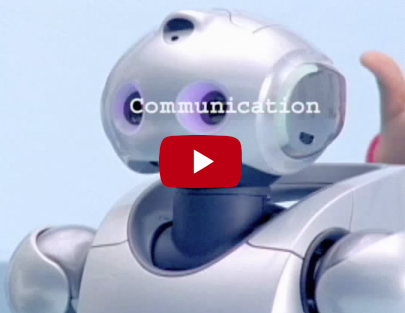I dream of robots—and a quest for curiosity
This week brought us the sad news of people's beloved robot dogs, the Aibos, slowly dying off for lack of replacement parts made by Sony. When I read the description for this assignment, my nostalgia for Sony's other robot, QRIO, which never actually made it to market, began to wax. Let me explain....
One is the loneliest number
I suffered from severe anxiety as a child which brought challenges to making friends—and isolation leading to depression later in life—but even as a kid, the idea of a smiling robot companion always warmed my heart and, to this day, still conjures up a hope in me of peaceful companionship without the fear of rejection. Kind of like my cat, except able to hold a conversation.
Do Pop Stars Dream of Electric Dogs?
When I was ten years old our family got our first computer and subscribed to dial-up Internet service. My older brother taught me how to connect to the Internet and search the Web. With the world's information at my fingertips, the future long promised by sci-fi shows and movies seemed almost here! Then one day I saw Janet Jackson's music video, "Doesn't Really Matter," which prominently featured what my brother told me was a "Sony Aibo." And so I had something new to look up the next time I fired up that old 56k modem.
"The thing I like best? Dreams!"
One click lead to another until I stumbled on to a page showing another robot friend, but this one was humanoid! There were also three videos (which took me the rest of the day to download, not counting the installation of RealPlayer) showcasing different aspects of QRIO's intelligence and agility. What really captivated my imagination, though, was the Communication video:
It seemed more than plausible to me (I was 11) that in Japan they would have robots that could walk, talk, dance, tell jokes, and just generally be your friend. I imagined saving my paper route money and then begging my parents to make up the difference so I could finally have my own little robot friend. He would wake me up in the morning with the gentle nudge of his tiny QRIO hands, pack my lunch, wave goodbye to me at the door, clean my room during the day, and then greet me again when I came home. He would ask me about my day, playing the role of comforter and sympathizer, and then help me with my homework before sitting down in front of the TV next to me to patiently watch whatever I put on. And then at night he would tuck me in and recharge himself next to my bed, stepping onto his charging station in something akin to Seven of Nine's regeneration station, albeit less Borg-like and without the creepy green lighting.
Sometimes reality is better than the fantasy
The last Aibo model released was the ERS-7M3 in 2005. In 2006 Sony ceased the development of QRIO. I know I wasn't the only one whose childhood dream was crushed on finding that out. At the peak of my excitement, when QRIO's release seemed a matter of when, not if, I remember reading a comment by another boy on a forum for all things robotic. His spelling and manner of expressing himself made me think that he was younger than me still, maybe just eight or nine. While I can't remember the exact words he typed, the sentiment he expressed resonated deeply within me and will likely stay engrained in my memory forever: He was desperately asking anyone on the forum about where he could find a QRIO to buy. He wrote how he wasn't liked by the kids at school and felt that having a QRIO could finally help him to no longer feel lonely.
I will never forget the hope he expressed. It isn't only children on the autism spectrum who would benefit from interacting with a human-like robot; in a world where people walk the streets or sit on busses with their heads tilted down at their screens rather than casually glancing at each other, striking up conversations, robots could be a safe way for us to get out of our nervous habits of self-stimulation through apps and games and instead practice the uncomfortable art of relinquishing full control of our attention, and maybe even learn how to share a moment with another person in the real world. We might just enjoy an enlightening conversation—which can be just as stimulating as an online interaction—but perhaps more meaningful and lasting.

